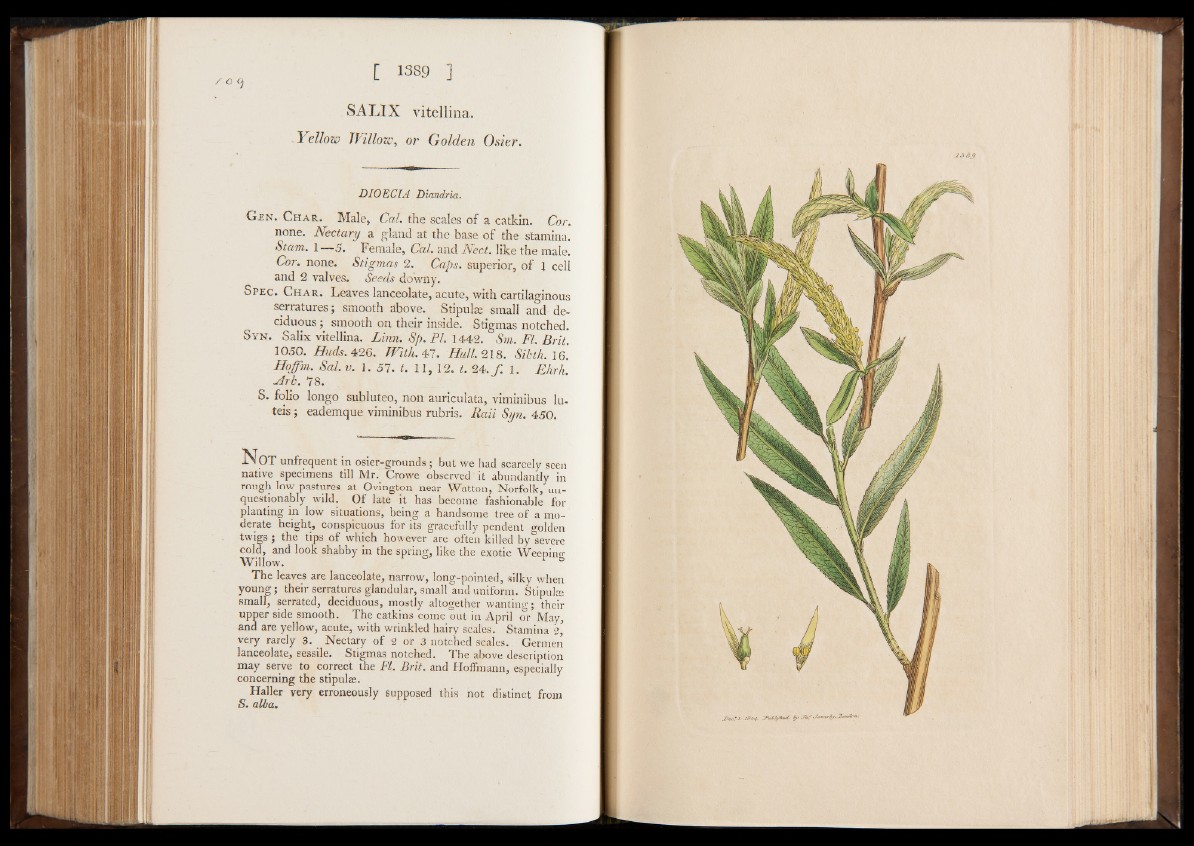
/ O Ck
S A L IX v ite llin a .
Yellow Willow, or Golden Osier|
DIOECIA Diandria.
G^n. Char. Male, Cal. the scales of a catkin. Cor.
none. Nectary a gland at the base of the stamina.
Stam. 1 5. Female, Cal. and Ned. like the male.
Cor. none. Stigmas 2. Caps, superior, of J cell
and 2 valves. Seeds downy.
Spec. Char. Leaves lanceolate, acute, with cartilaginous
serratures; smooth above. Stipulae small and deciduous
; smooth on their inside. Stigmas notched.
Syn. Salix vitellina. Linn. Sp. PI. 1442. Sm. FI. Brit.
1050. Buds. 4 2 6 . With. 47. Hull. 218. Sibth. 16.
Hoffm. Sal. v. 1. 57. t. 1 1 , 12. t. 24. f 1. Ehrh.
Brb. 78.
S. folio longo subluteo, non auriculata, viminibus lu-
teis; eademque viminibus rubris. Rail Syn. 450.
N o t unfrequent in osier-grounds; but we had scarcely seen
native specimens till Mr. Crowe observed it abundantly in
rough low pastures at Ovington near Watton, Norfolk, unquestionably
wild. Of late it has become fashionable for
planting in low situations, being a handsome tree of a moderate
height, conspicuous for its gracefully pendent golden
twigs ; the tips of which however are often killed by severe
cold, and look shabby in the spring, like the exotic Weepino-
Willow.
The leaves are lanceolate, narrow, long-pointed, silky when
young; their serratures glandular, small and uniform. Stipulaj
small, serrated, deciduous, mostly altogether wanting; their
upper side smooth. The catkins come out in April or May,
and are yellow, acute, with wrinkled hairy scales. Stamina 2,
very rarely 3 . Nectary of 2 or 3 notched scales. Germen
lanceolate, sessile. Stigmas notched. The above description
may serve to correct the FI. Brit, and Hoffmann, especially
concerning the stipulae.
Haller very erroneously supposed this not distinct from
S. alba.